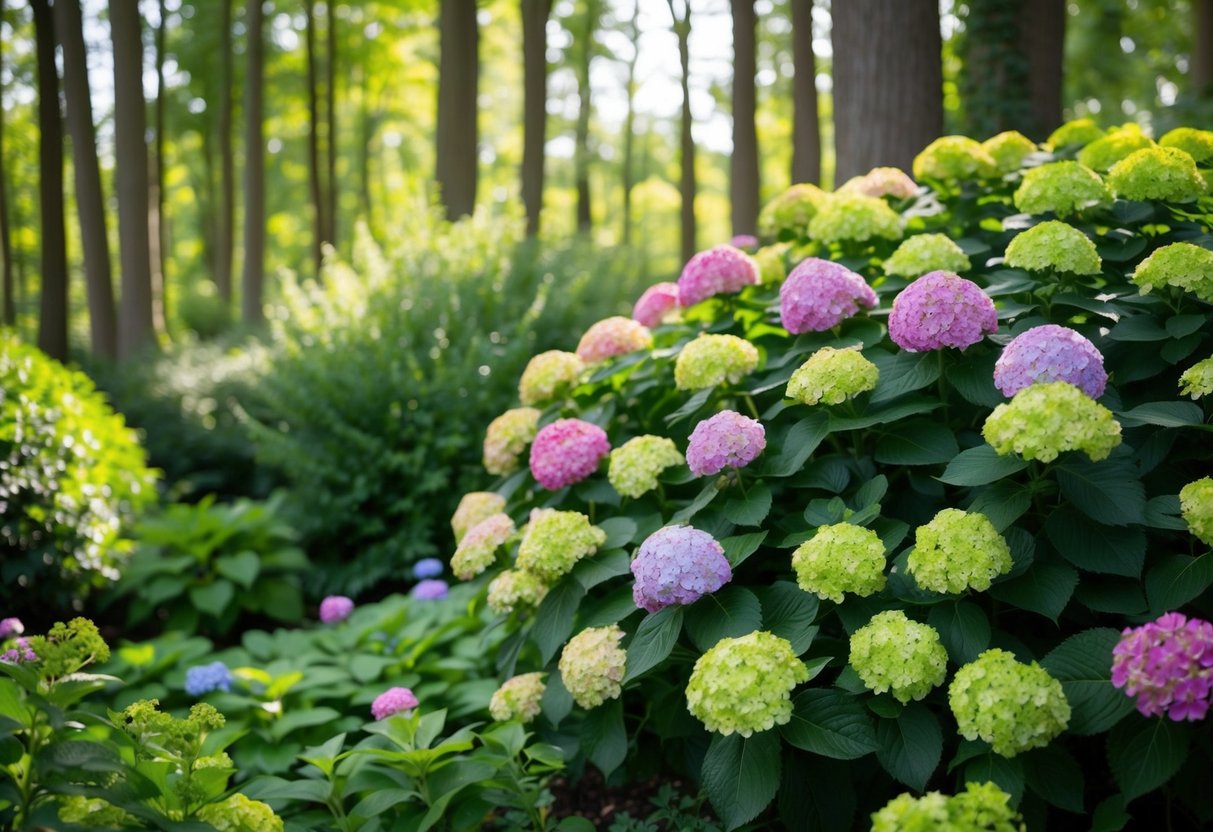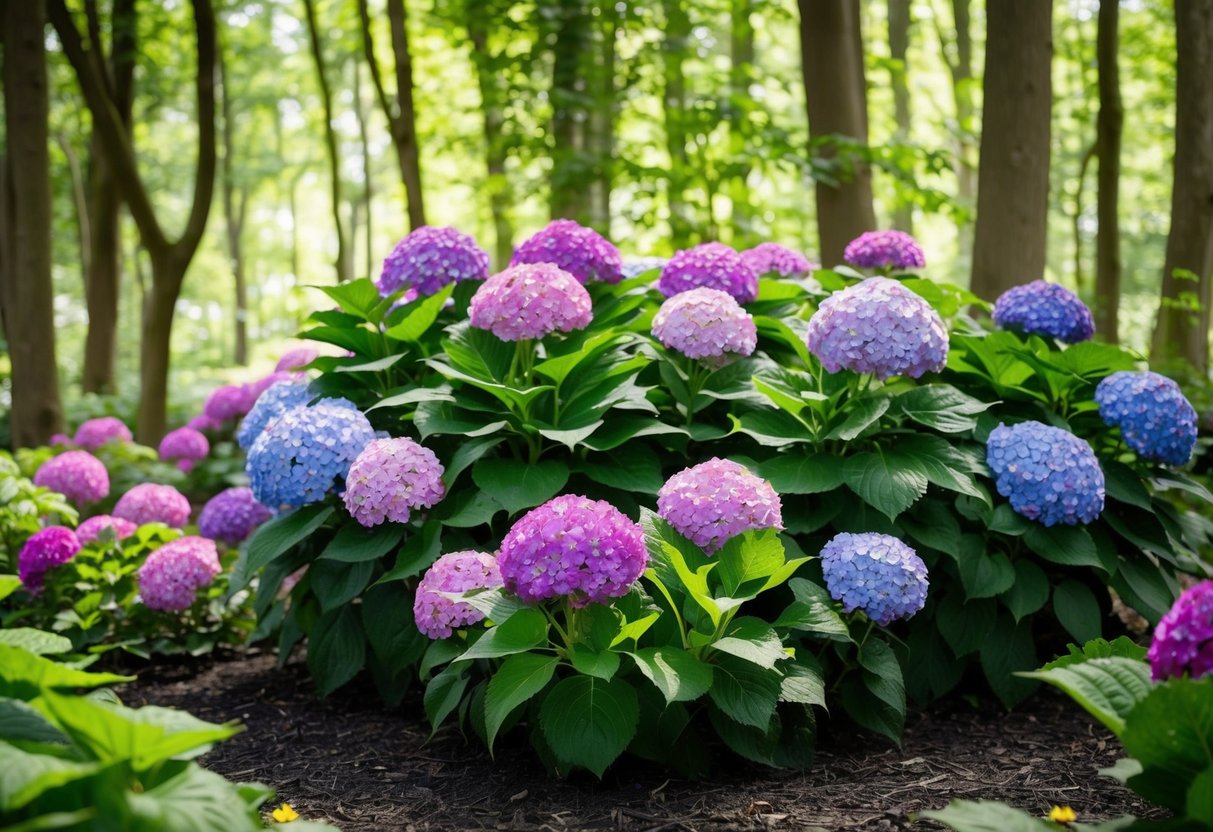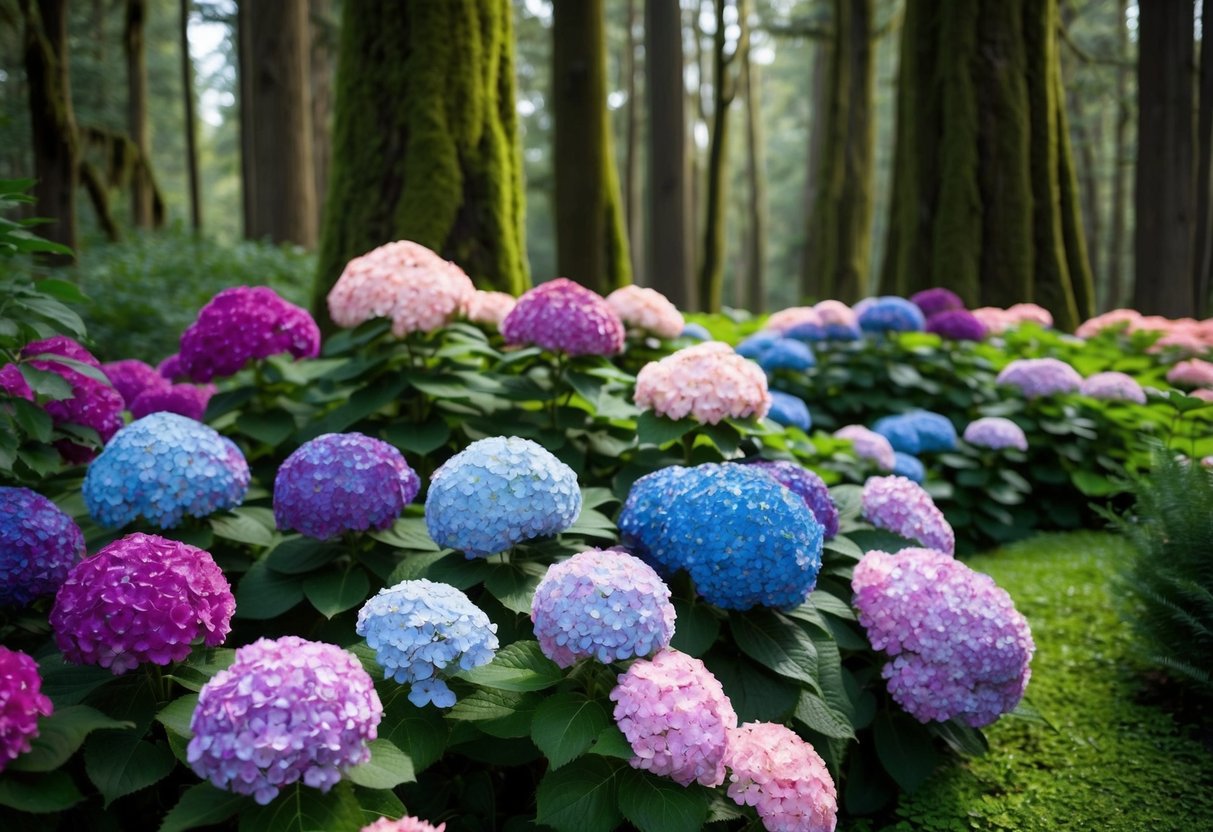Can Hydrangeas Grow in Full Shade in the UK? Tips for Garden Success
Gardening enthusiasts often wonder if the beautiful hydrangea can thrive in full shade. This question is especially relevant for gardeners in the UK, where sunlight can be scarce. Some varieties of hydrangeas can grow in full shade, but they may not bloom as well as those in partial shade.

Exploring different types of hydrangeas could lead you to varieties that are more tolerant of shade. For example, some types prefer afternoon shade and are suitable for gardens with limited sun.
By choosing the right spot and type, you can still enjoy the lush greenery and unique blooms of hydrangeas in less sunny areas.
This guide will explore the best ways to help your hydrangeas flourish, even in the shadier corners of your garden. You might find that with a few adjustments, these lovely flowers will brighten up the darkest parts of your garden with their charming blossoms.
Understanding Hydrangeas and Light Requirements

Hydrangeas are versatile plants with varying light needs. While some thrive in full sun, others do well in partial or full shade. These light conditions affect their growth, bloom size, and color. It’s important to choose the right variety for your garden depending on the amount of sunlight available.
Varieties of Hydrangeas and Their Light Preferences
Different hydrangea varieties have specific light preferences. For instance, the Moonlight Hydrangea is known to be shade-tolerant, doing well in dappled shade or parts sun. In contrast, some types, like the mophead hydrangeas, prefer locations with dappled morning sun but need protection from harsh afternoon rays.
Oakleaf hydrangeas and climbing hydrangeas are excellent choices for full shade conditions. These varieties flourish even when sunlight is scarce, making them ideal for shaded UK gardens. Understanding these differences helps you decide on the best hydrangea variety for your garden’s light conditions. You can learn more about choosing the right hydrangea variety by visiting this helpful guide.
Planting Hydrangeas in the UK Climate

Growing hydrangeas in the UK requires choosing the right spot and understanding soil needs. Factors like sunlight and soil pH can greatly impact the health and bloom of your plants.
Choosing the Right Location for Hydrangeas
When planting hydrangeas, location is key. Hydrangea macrophylla thrives in spots with partial shade, benefiting from dappled sunlight that protects them from harsh rays. Hydrangea paniculata is a bit more tolerant, handling both sun and shade well. For full shade lovers, consider hydrangea anomala, as it can adapt better to lower light.
In the UK, a sheltered area is advisable to protect your hydrangeas from strong winds. Wind can dry out the soil and damage the delicate blooms. Proper placement helps ensure your plants stay healthy and vibrant.
Soil Requirements for Optimal Growth
Understanding the soil needs of hydrangeas is crucial for their success. Most hydrangeas like acidic soil, with a pH between 5.2 and 6.2, which influences flower color—acidic soils can produce blue blooms, while alkaline soils might turn them pink.
Adding organic matter like compost can improve soil structure and moisture retention. Hydrangea arborescens and hydrangea quercifolia prefer well-draining soil to prevent waterlogging.
Apply a layer of mulch around the base of your plants to keep the soil cool and preserve moisture.
Soil testing can be helpful to determine the pH and necessary amendments. Adjusting soil conditions to match the preference of your hydrangeas will greatly enhance their growth and flowering potential.
Shade-Tolerant Varieties Suitable for the UK

Hydrangeas can add beauty to shaded areas in your garden. Several types are particularly well-suited for shady spots in the UK. Below, you’ll find options for climbing walls and shaded garden areas that thrive without full sunlight.
Climbing Hydrangeas for Shaded Walls
Climbing hydrangeas, like the Hydrangea petiolaris, are perfect for shaded walls. These plants can climb up to 60 feet, making them ideal for covering walls or trellises. They produce fragrant white flowers in late spring and early summer, adding brightness to any dim spot.
These hydrangeas have aerial roots that cling to surfaces, making them low-maintenance and easy to train. They are known for their large, heart-shaped leaves that can create a lush, green backdrop. This makes them a popular choice for transforming dark garden spots into vibrant vertical spaces.
Oakleaf and Bigleaf Hydrangeas for Shaded Gardens
Oakleaf hydrangeas (Hydrangea quercifolia) are known for their distinctive lobed leaves, resembling oak leaves. They are shade-tolerant and flourish in partial to full shade. These hydrangeas also provide stunning autumn foliage in shades of red and bronze.
Bigleaf hydrangeas, like Hydrangea macrophylla, thrive in shaded gardens. They are known for their large, round flower heads that can vary in color based on soil pH. In shaded spots, these flowers often display vibrant pink or blue blooms, adding cheerful color where it might otherwise be lacking. Adaptable to different garden styles, these hydrangeas are a favorite among UK gardeners.
Caring for Hydrangeas in Shade

When caring for hydrangeas in shady areas, you’ll need to pay special attention to managing soil moisture and using proper pruning techniques. This helps ensure healthy growth and beautiful blooms.
Watering and Managing Soil Moisture
Hydrangeas in shade require well-maintained soil moisture. These plants love moist soil, so it’s important to water them deeply once or twice a week.
You can check soil moisture by sticking your finger about an inch into the soil. If it’s dry, it’s time to water.
Using mulch can help retain soil moisture and prevent evaporation. Spread a layer of organic matter or mulch, about two to three inches thick, around the base of the plants. Materials like wood chips, pine needles, or compost work well.
Ensure the mulch doesn’t touch the stems to avoid rot. This practice not only maintains moisture but also adds vital nutrients to the soil over time, keeping your hydrangeas healthy and vibrant.
Pruning Techniques for Shade-Grown Hydrangeas
Pruning is essential for keeping shade-grown hydrangeas in good shape. The best time to prune is right after they have finished flowering. This prevents cutting off next year’s blooms, as many hydrangeas bloom on old wood.
Focus on removing dead or damaged stems and thinning out dense growth to improve air circulation.
For proper pruning, use clean, sharp shears and cut above a node or bud. This encourages new growth and more flowers.
Avoid excessive pruning as it may stress the plant and reduce flowering. Additionally, pruning hydrangeas in early spring or late winter can help guide their shape and control their size, ensuring your plant flourishes in shady environments.
Factors Affecting Flowering and Color

When growing hydrangeas in full shade, several factors will impact how well they flower and the color of their blooms. You’ll want to consider how shade influences flower production and how soil pH affects the color of hydrangea flowerheads.
Influence of Shade on Flower Production
Hydrangeas can grow in full shade, but the amount of light they receive plays a crucial role in flower production. If they get some morning sun, they tend to produce more blooms. In fully shaded areas, the flowers might be fewer and less vibrant.
Hydrangeas that grow in too much shade can have smaller flowerheads. For better results, aiming for a spot with partial shade is recommended. This provides enough light for optimal flowering without the harshness of full sun. Limited light can also cause the flowers to be less colorful, sometimes even turning green. While some hydrangeas can thrive with less light, it’s good to monitor their growth closely.
Soil pH and Hydrangea Flower Colors
The color of your hydrangea blooms is heavily influenced by soil pH. Acidic soil, with a pH below 6, often leads to blue flowers. On the other hand, alkaline soils, with a pH above 6, typically result in pink flowers.
Changing the soil’s pH can change the color of the hydrangea blooms. For blue flowers, adding soil amendments like sulfur can decrease pH. Meanwhile, lime can help turn the blooms pink by increasing pH levels.
Keep an eye on the soil pH level to ensure your hydrangeas show off the colors you desire. Just remember, patience is key, as changes in flower color can take a season to appear.







